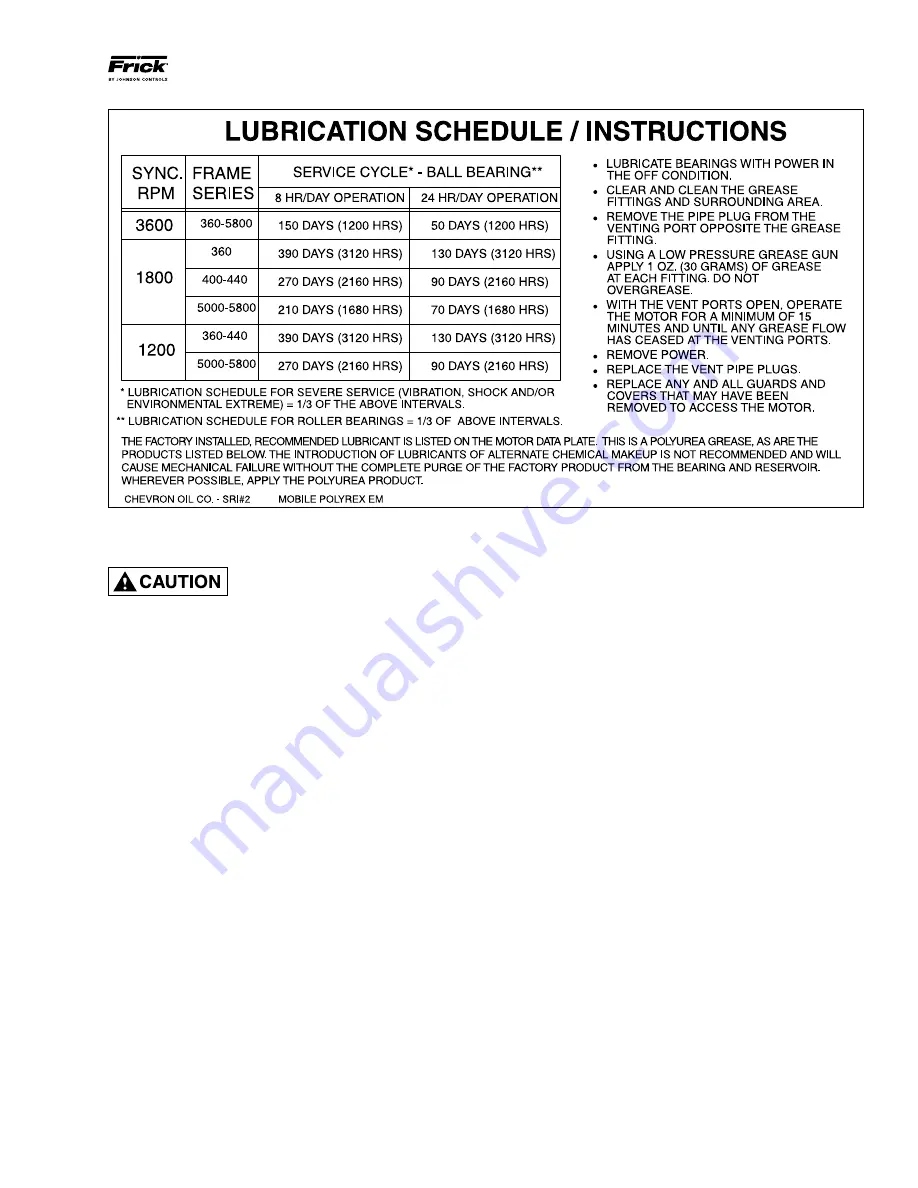
RXF ROTARY SCREW COMPRESSOR UNITS
MAINTENANCE
070.410-IOM (JAN 12)
Page 31
Figure 33
The first step in effective problem solving is to define the
limits of the problem. If, for example, the compres sor pe-
riodically experienc es high oil tempera tures, do not rely on
this observation alone to help identify the problem. On the
basis of this information, the apparent corrective measure
would appear to be a re adjustment of the liquid injection
system. Lowering the equalizing pressure on the thermal
expansion valve would in crease the refriger ant feed and the
oil temperature should drop.
If the high oil temperature was the result of high suction
superheat, however, and not just a matter of improper liquid
injection adjust ment, increasing the liquid feed could lead to
other problems. Under low load conditions the liquid injection
system may have a tendency to overfeed. The high suction
superheat condition, moreov er, may only be tempor ary.
When system conditions return to normal, the unit's liquid
injection will overfeed and oil temperature will drop. In solv-
ing the wrong problem a new problem was creat ed.
The following list of abnormal system condi tions can cause
abnormal operation of the RXF compressor unit:
1. Insufficient or excessive refrigeration load.
2. Excessively high suction pressure.
3. Excessively high suction superheat.
4. Excessively high discharge pressure.
5. Inadequate refrigerant charge or low receiv er level.
6. Excessively high or low temperature coolant to the oil
cooler.
7. Liquid return from system (carryover).
8. Refrigerant underfeed or overfeed to evapor ators.
9. Blocked tubes or plates in water-cooled oil cooler from
high mineral content of water.
10. Insufficient evaporator or condenser siz ing.
MOTOR BEARINGS
Lubricate motor bearings properly
before start-up. Maintain subse-
quent lubrication as recommended
by the motor manufacturer. See Figure 33.
OPERATING LOG
The use of an operating log, as shown in this manual (see
Table of Contents...FORMS), permits thorough analysis of
the operation of a refrigeration system by those responsible
for its maintenance and servicing. Continual recording of
gauge pressures, temperatures, and other pertinent informa-
tion enables the observer and serviceman to be constantly
familiar with the operation of the system and to recognize
immediately any deviations from normal operating condi-
tions. It is recommended that readings be taken at least
every four hours.
TROUBLESHOOTING GUIDE
Successful problem solving requires an organ ized ap proach to
define the problem, identify the cause, and make the proper
correction. Sometimes it is possible that two relatively obvi-
ous problems combine to provide a set of symptoms that
can mislead the troubleshooter. Be aware of this possibility
and avoid solving the “wrong problem”.
ABNORMAL OPERATION
ANALYSIS and CORRECTION
Four logical steps are required to analyze an opera tional
problem effectively and make the necessary correc tions:
1. Define the problem and its limits.
2. Identify all possible causes.
3. Test each cause until the source of the problem is found.
4. Make the necessary corrections.
















































